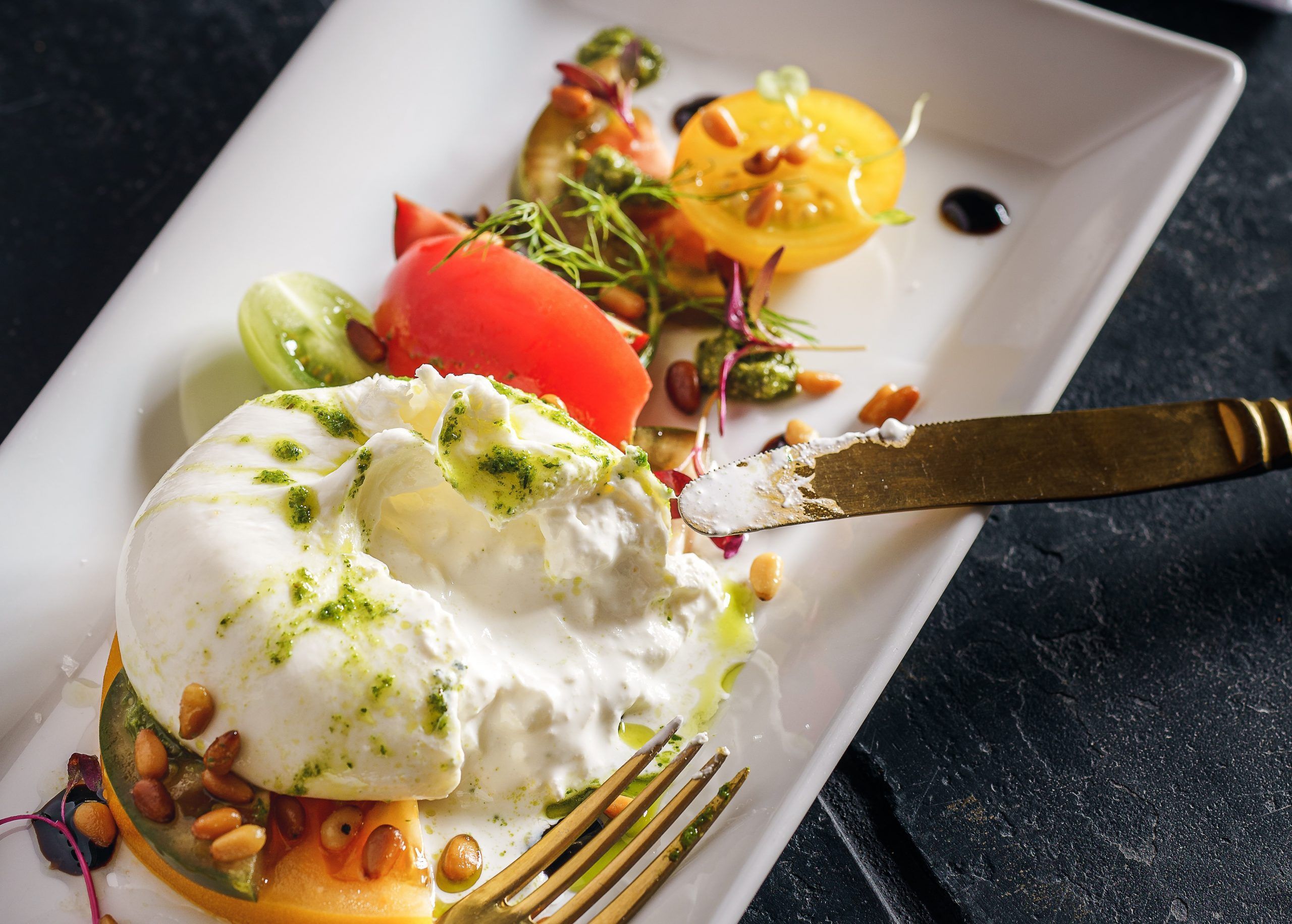Burrata is a fresh cow’s milk cheese made from spun paste a dairy preparation typical of Puglia but appreciated throughout Italy. Its round shape, like a sack, is reminiscent of mozzarella, although there are fundamental differences between the two fresh cheeses. Let’s find out more.
Burrata is a typical dairy product of Puglia, a fresh cheese made from spun paste cow’s milk. An IGP from Adria, a town in Puglia where this delicious white mozzarella ball was born, its shape resembles that of a small sack of soft spun dough, with a soft creamy filling, called stracciatella, which is spun, laced pasta mixed with cream. The name “burrata” refers to the flavor of its filling, which is rich and buttery, and not to the fact that it may have been enriched with large quantities of butter during processing. Let’s find out more about this delicious fresh cheese.
History and origins of the burrata
The burrata has quite recent origins: it was born in Puglia, in Andria, in 1956. Its inventor is Lorenzo Bianchino, a well-known local cheese maker. It is said that in that year, due to a tremendous snowfall that made it difficult to transport dairy products, Bianchino decided to keep the cream in mozzarella wrappers, so as to transport them to the city from the countryside. Thus was born the Apulian burrata, this delicious fresh cheese known worldwide for its goodness.
Burrata: what is it and recipes for consuming it
Burrata is a fresh cheese of spun paste cow’s milk, its shape is roundish with a typical apical closure, and its weight can vary from 150 to 500 grams. The burrata does not have a crust, its casing is smooth and white in color, and its flavor is similar to that of milk but is more delicate on the outside and more intense and buttery as you get closer to the center. The dough is compact and shiny on the outside and very soft inside. It usually is sold wrapped and tied with stems of vizzo, an herb that transmits an aromatic note to the burrata.
The burrata can be eaten natural or seasoned with salt and pepper and served with cherry tomatoes and salad. It is excellent if enjoyed on a large slice of toasted bread, perhaps accompanied by a slice of ham. It also can be used in recipes as a filling for stuffed zucchini flowers or to cream with a tasty risotto. A refined combination is instead the one between burrata and caviar. To savor all the freshness of the burrata, the advice is to wait at least a couple of days, when the dairy product will have reached the right consistency, and cream and stracciatella inside will be well blended.
Burrata and mozzarella: what are the differences?
Both mozzarella and burrata are fresh cheeses made from spun paste cow’s milk, and this is the only thing they have in common. The production process is different: mozzarella is made from curd, which is obtained by adding milk enzymes and rennet to cow’s milk. Then, there are the cutting of the curd and the extraction of the whey. The curd is then cut into strips and kneaded in boiling water, so as to make it spin. It then will be transformed into mozzarella, which is done manually or through a special machine. The burrata, on the other hand, is made starting from the mozzarella spun paste, which, in this case, has the function of a wrapper with frayed spun dough, called stracciatella di burrata, combined with cream to form a creamy and soft filling. The mozzarella also has a more delicate flavor and an elastic consistency, unlike the burrata, which is softer, more savory, and even more caloric, around 250 Kcal per 100g, given the presence of cream inside.
How to preserve the burrata
The burrata can be stored for 2 days at a temperature that can vary from 4 ° to 6 ° C. Before consuming it, bring it back to room temperature. To check its freshness, make sure that the palate does not taste sour or bitter but that it retains an aftertaste of fresh butter and hazelnut.
Credit: Cucina Fanpage

